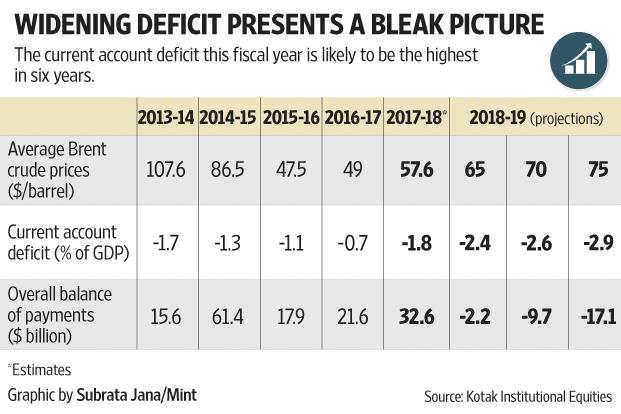What is Current Account Deficit?
- It means the value of imports of goods/services/investment incomes is greater than the value of exports.
- It is sometimes informally referred to as a trade deficit.
- The major contributor to India‘s Current Account Deficit (CAD) has been imports of Gold and Crude Oil.

Impact of CAD
- Sustained period of CAD has led to currency depreciation, high rates of inflation which further effects the incoming foreign investment.
- Fall in gold imports and lower oil import bill in recent time led to shrinkage in the deficit.
- A current account surplus means an economy is exporting a greater value of goods and services than it is importing.
- There is no hard and fast rule about what will happen if a country has a current account surplus. It depends on the size of the current account and the reasons for the current account surplus.
- In the case of India, slow growth in imports, reflecting the persisting weakness in the investment sentiment, is the prominent reason behind this.
- The current account was in surplus last in the January-March quarter in the year 2007
Why in news?
- India’s current account moved in to surplus in the April-June quarter of the current fiscal year after a gap of 9 years.
- India’s CAD narrowed during 2016-17 fiscal owing to a contraction in the country’s trade deficit. Country’s trade deficit narrowed down to $112.4 billion in 2016-17 from $130.1 billion in 2015-16.